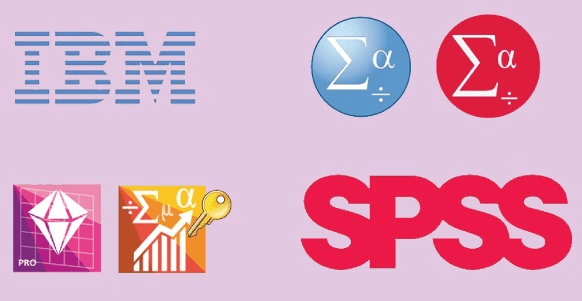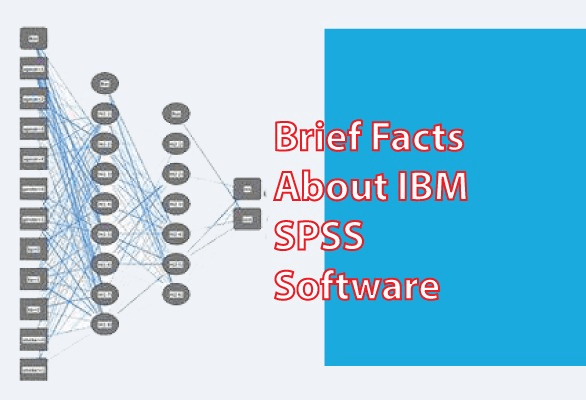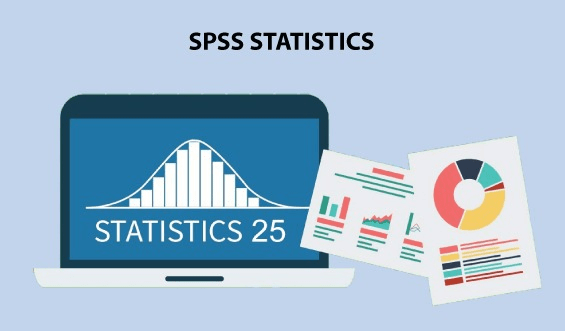SPSS Tutorial
Introduction
SPSS Statistics (stands for Statistical Package for the Social Sciences) is an item group used for wise, or amassed, quantifiable examination. Since quite a time, it was acquired in 2009, by IBM, the past conveyed by SPSS Inc.

The IBM SPSS programming stage offers advanced quantifiable examination, a huge library of AI estimations, message assessment, open source extensibility, coordination with enormous data and steady sending into applications.
Its ease of use, flexibility and adaptability make SPSS accessible to customers of all capacity levels. Also, its sensible for endeavors, things being what they are, and levels of multifaceted nature, and can help you and your affiliation find new opportunities, further foster capability and cutoff risk.
Inside the SPSS programming gathering of things, SPSS Statistics maintains a various leveled, hypothesis testing way of managing your data while SPSS Modeler revealed models and models disguised in data through a base up, hypothesis age approach.
Why SPSS?
1. Measurements Program
SPSS's measurements program gives a lot of fundamental factual usefulness; some incorporate frequencies, cross-organization, bivariate insights, and so on
2. Modeler Program
Scientists can construct and approve prescient models with the assistance of cutting edge measurable systems.
3. Text Analytics for Surveys Program
It gives vigorous input examination. which thusly get a dream for the real arrangement.
4. Representation Designer
Analysts tracked down this visual fashioner information to make a wide assortment of visuals like thickness outlines and spiral box plots.
Uses of SPSS
- Factual investigation is the main purpose of Spss in sociology.
- It is utilized by economic analysts, wellbeing specialists, overview organizations, government, schooling scientists, advertising associations, information excavators, and others.
- “Social science's most persuasive book” is the first SPSS manual has been depicted as one of for permitting common expert analysts to do their own interrogation in the year 1970. Notwithstanding factual investigation, information the executives (case determination, record reshaping, making inferred information) and information documentation (a metadata word reference is put away in the datafile) are components of the base programming.
- The elements of Statistical Package for the Social Sciences Statistics are open by the name of "pull-down menus" or can be modified with an exclusive "4GL" order punctuation language.
- Order grammar programming has the advantages of reproducible yield, improving dreary undertakings, and dealing with complex information controls and examinations.
- Furthermore, some intricate applications must be modified in grammar and are not open through the menu structure.
- The "pull-down menu" interface likewise produces order language structure: this can be shown in the yield, albeit the default settings must be changed to make the grammar noticeable to the client.
- Furthermore a "large scale" language can be utilized to compose order language "subroutines". A Python programmability augmentation can get to the data in the information word reference and information and powerfully assemble order sentence structure programs.
- Furthermore, the Python augmentation permits SPSS to run any of the insights in the free programming bundle R. From rendition 14 onwards, SPSS can be driven remotely by a Python or a VB.NET program utilizing provided "modules". (From Version 20 onwards, these two prearranging offices, just as many contents, are remembered for the establishment media and are ordinarily introduced naturally.)
- SPSS Statistics places limitations on interior document structure, information types, information preparing, and coordinating records, which together impressively work on programming.
- SPSS datasets have a two-dimensional table construction, where the lines normally address cases (like people or families) and the sections address estimations (like age, sex, or family pay). Just two information types are characterized: numeric and text . All information handling happens successively one case at a time case through the document (dataset).
Functionalities of SPSS
A portion of the functionalities of SPSS incorporates the accompanying
- Information Transformations
- Information Examination
- Clear measurements
- General Linear model
- Unwavering quality tests
- Connection
- "T-tests"
- ANOVA
- MANOVA
- Relapses
- Factor investigation
- Bunch examination
- Probit investigation
- Time series
- Endurance investigation
- Designs and graphical interface
Uses of SPSS in terms of reading and manipulating different files

SPSS Statistics can peruse and compose information from ASCII text documents (counting various leveled records), different insights bundles, bookkeeping pages and data sets. SPSS Statistics can peruse and keep in touch with outside social data set tables by means of ODBC and SQL.
On the other hand, yield can be caught as information (utilizing the OMS order), as text, tab-delimited text, PDF, XLS, HTML, XML, SPSS dataset or an assortment of realistic picture designs (JPEG, PNG, BMP and EMF).
A few variations of SPSS Statistics exist. SPSS Statistics Gradpacks are profoundly limited adaptations sold distinctly to understudies. SPSS Statistics Server is a rendition of SPSS Statistics with a customer/server engineering. Extra bundles can upgrade the base programming with extra components (models incorporate complex examples which can adapt to bunched and delineated examples, and custom tables which can make distribution prepared tables). SPSS Statistics is accessible under either a yearly or a month to month membership permit.
Documents can be coordinated with balanced and one-to-many, however relatively few to-many. Notwithstanding that cases-by-factors design and handling, there is a different Matrix meeting where one can deal with information as frameworks utilizing network and direct polynomial math tasks.
History
- SPSS was delivered in its first form in 1968 as the Statistical Package for the Social Sciences (SPSS) in the wake of being created by" Norman H. Nie, Dale H. Bowed, and C. Hadlai Hull".
- Those directors fused as SPSS Inc. in 1975.
- Early forms of SPSS Statistics were written in Fortran and intended for bunch handling on centralized computers, including for instance IBM and ICL variants, initially utilizing punched cards for information and program input.
- SPSS Inc declared on , 2009, month July 28 that it was being gained for IBM for US$1.2 billion. Due to a debate about responsibility for name "SPSS", somewhere in the range of 2009 and 2010, the item was alluded to as PASW (Predictive Analytics SoftWare).
- On 2010, it named as" An IBM Companyà SPSS". Complete exchange of business to IBM was finished by October 1, 2010.
Versions of SPSS
- SPSS 1 - 1968
- 1983 SPSS 2
- 1993 SPSS 5
- SPSS 6.1 - 1995
- SPSS 7.5 - 1997
- SPSS 8 - 1998
- SPSS 9 - 1999
- SPSS 10 - 1999
- SPSS 11 - 2002
- SPSS 12 - 2004
- SPSS 13 - 2005
- SPSS 14 - 2006
- SPSS 15 - 2006
- SPSS 16 - 2007
- SPSS 17 - 2008
- PASW 17 - 2009
- PASW 18 - 2009
- SPSS 19 - 2010
- SPSS 20 - 2011
- SPSS 21 - 2012
- SPSS 22 - 2013
- SPSS 23 - 2015
- SPSS 24 - 2016,
- SPSS 25 - 2017,
- SPSS 26 - 2018
- SPSS 27 - 2019,
- SPSS 28 – 2021
Features of SPSS

- In SPSS, information gets put away in.SAV design. These information generally comes from studies. This makes the most common way of controlling, investigating and pulling information exceptionally straightforward.
- SPSS have simple admittance to information with various variable sorts. These variable information is straightforward. SPSS assists scientists with setting up model effectively in light of the fact that a large portion of the interaction is computerized.
- It is simple for you to learn and utilize
- It incorporates a ton of information the board framework and altering apparatuses
- It offers you top to bottom measurable abilities
- It offers amazing plotting, detailing and show highlights
- Subsequent to getting information in the sorcery of SPSS begins.
- SPSS has a special way of getting information from basic information moreover. Pattern examination, presumptions, and prescient models are a portion of the attributes of SPSS.
- SPSS is simple for you to learn, utilize and apply.
- It helps in to get information the board framework and altering devices convenient.
- SPSS offers you inside and out factual abilities for breaking down the specific result.
- SPSS assists us with planning, plotting, detailing and show highlights for greater lucidity.
Statistical Methods of SPSS

- Numerous measurable strategies can be utilized in SPSS, which are as per the following:
- Forecast for an assortment of information for distinguishing gatherings and including strategies, for example, group examination, factor investigation, and so on
- Enlightening insights, including the strategies of SPSS, are frequencies, cross-classification, and graphic proportion measurements, which are exceptionally valuable.
- Additionally, Bivariate insights, including strategies like examination of fluctuation (ANOVA), means, connection, and nonparametric tests, and so on
- Numeral result expectation like direct relapse.
- It is a sort of self-unmistakable instrument which naturally thinks about that you need to open a current record, and with that opens a discourse box to ask which document you might want to open. This methodology of SPSS makes it exceptionally simple to explore the interface and windows in SPSS in the event that we open a document.
- Other than the factual examination of information, the SPSS programming additionally gives information the executives highlights; this permits the client to do a determination, make inferred information, perform document reshaping, and so forth Another component is information documentation. This component stores a metadata word reference alongside the information document.
SPSS Tutorial Index
- SPSS Tutorial
- SPSS Core functions
- Kolmogorov-smirnov Analysis
- Linear Regression Analysis
- SPSS Reliability Analysis
- SPSS Shapiro-Wilk test
- SPSS Normality test
- Pros and cons of SPSS
- SPSS Scale of Measurement
- SPSS Architecture
- SPSS Graph Command
- SPSS IGraph Command
- SPSS variables
- Top 10 SPSS books about IBM SPSS